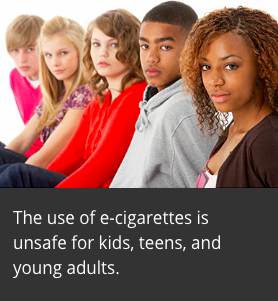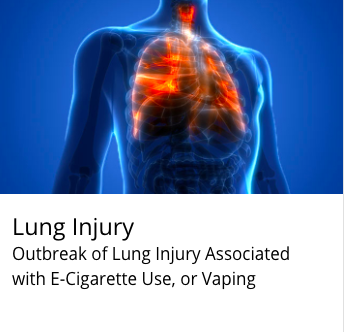
In the wake of recent deaths and lung illness cases caused by vaping, or the use of e-cigarettes, the Center for Disease Control (CDC) has issued statements discouraging vaping in kids, teens and young adults and cautioned everyone about the unknown risks of vaping long-term. The CDC released statistics in a statement saying “as of October 15, 2019, 1,479 lung injury cases associated with the use of e-cigarette, or vaping, products have been reported to CDC from 49 states (all except Alaska), the District of Columbia, and 1 U.S. territory. Thirty-three deaths have been confirmed in 24 states. All patients have reported a history of using e-cigarette, or vaping, products.”
Niamh Foley, the Director Student Services for Coronado Unified School District (CUSD) sat down with me to answer some questions relating to vaping education and policies in the schools. She explained that “the district’s approach is to educate, ensuring students and families have all the information so they can make wise decisions.” She shared that the district works closely with Coronado SAFE to help educate the community on topics concerning the health and well-being of our kids.
Naimh explained that while there is no specific vaping policy at CUSD, vaping falls under California Code 48900 (h) which states: A student who has committed the following acts is subject to discipline by suspension or expulsion: (h) Possessed or used tobacco, or any products containing tobacco or nicotine products while on school grounds.
When asked how the schools are educating kids on the risks of vaping Niamh shared, “Risks of vaping are first introduced to our students during the 6th grade drug store program. They are also covered in the classroom sessions of PE in 7th, 8th and 9th grade as part of the health standards.” Niamh said that vaping is not an issue at the middle school and her understanding is things are getting better at the high school as they are seeing a decline in reported instances. Niamh also shared the results of Coronado’s California Healthy Kids Survey (CHKS) from last year that included questions for grades 7, 9 and 11 related to vaping. That survey included statistics on how many students had ever used electronic cigarettes, indicating that 6% of 7th graders had tried vaping and 4% currently use e-cigarettes. 20% of 9th graders have tried e-cigarettes and 12% currently use e-cigarettes and 35% of 11th graders have tried e-cigarettes and 21% currently use e-cigarettes.
This past February, Coronado was identified in an ABC News 10 article as one of the San Diego County schools that has a 17% higher average number of students who vape than the California state average (which was 10%). When asked if he thought vaping was a problem in Coronado High School, Principal Shane Schmeichel said, “We have noticed a significant decline of vaping on the campus. We do not know if this means there are less students using, or just not using on the campus.” This sentiment is also shared by some students I polled who said that kids are not vaping in schools as much after seeing consequences doled out in years past to students who were caught vaping on campus. Principal Schmeichel also shared educational information in his latest email update for parents and the CHS community that provided facts about the harms associated with youth vaping and nicotine addiction.
When polling random students from the high school, who shall remain anonymous, it became apparent that vaping is popular, sometimes seen as a right of passage that everyone should at least try once. Depending on the age or gender, I was given varying responses on if vaping was considered a problem in the High school. Some students shared that they refused to use some bathrooms because of the vaping that goes on. Seniors tended to think vaping is less common this year, and that with the recent media attention on deaths and illnesses some noticed that people are starting to quit and throw away their vaping products. One female student shared that she thought it was more common in female students who “want to look cool and fit in.” Overall, the thought was maybe 10% of Coronado High School students were “active vapors” who vape regularly, while 70% or so have at least tried it.
According to a CNN health article by Leah Asmelash, many high schools across the country have embraced vape detectors as key to their fight against bathroom vaping in schools. When asked if Coronado had considered vape detectors, Principal Schmeichel said, “We have considered vape detectors, but have been focusing more on education of impact of vaping (catching a student doesn’t help them stop, but education can convince them to not do it).” He went on to say, “Due to our cell phone policy we have a lot less students in the bathrooms during class time and therefore, less vaping in the bathroom during class time.”
SYMPTOMS OF PULMONARY ILLNESS
A recent LA Times article, titled: The recent vaping deaths are bad. The long term toll will be even worse, outlined symptoms of lung illness caused by vaping “is marked by chest pain, shortness of breath and vomiting, and it has largely affected young people. The vast majority of cases, almost 80%, involve e-cigarette users younger than 35, and another 15% are younger than 18.” Healthcare professionals are encouraging anyone who has vaped within the last 90 days that shows symptoms of shortness of breath, wheezing, fatigue, coughing and chest tightness to be seen by their healthcare provider.
The CHKS survey showed that approximately 80% of high school students perceive it is easy to obtain e-cigarette or vaping devices. Vaping products are sold in many local Coronado stores such as Walgreens, Central Liquor, and Vons, but you must be 21 to purchase these products. Online sales of vaping products make it easier for students to get access. E-cigarette manufacturers are coming under fire for their marketing tactics aimed at children, selling vaping flavors such as cotton candy and apple pie, and selling product concealers that make vaping tools look like pens or USB ports. Most e-cigarettes contain nicotine, which is highly addictive and can harm brain development in young adults and teens.

Vaping is marketed as a safe alternative to smoking, and many adults use it as a way to quit smoking. However, the long term risks associated with vaping are unknown and John’s Hopkins Medicine put out an online article that said, “Although they’ve been marketed as an aid to help you quit smoking, e-cigarettes have not received Food and Drug Administration approval as smoking cessation devices. A recent study found that most people who use e-cigarettes to kick the nicotine habit end up continuing to smoke both traditional and e-cigarettes.”

With the recent spike in illness and deaths related to vaping, many states have temporarily banned flavored vaping products (New York, Michigan and Rhode Island), or urged their consumers to stop using them (California and Oregon). Massachusetts placed a temporary ban on all vaping products until more is understood about what is causing the illnesses. In September, California Gov. Gavin Newsom issued an executive order to spend $20 million to help confront the “youth vaping epidemic.” “We must take immediate action to meet the urgency behind this public health crisis and youth epidemic,” said Governor Newsom. “As a parent, I understand the anxiety caused by the deceptive marketing tactics and flavored options designed to target our kids. With mysterious lung illnesses and deaths on the rise, we have to educate our kids and do everything we can to tackle this crisis. There is a broad and bipartisan coalition of legislators seeking to protect our youth, and we are committed to working with the Legislature and stakeholders to build on these executive actions and put forward a strong tobacco reform package in 2020.”




